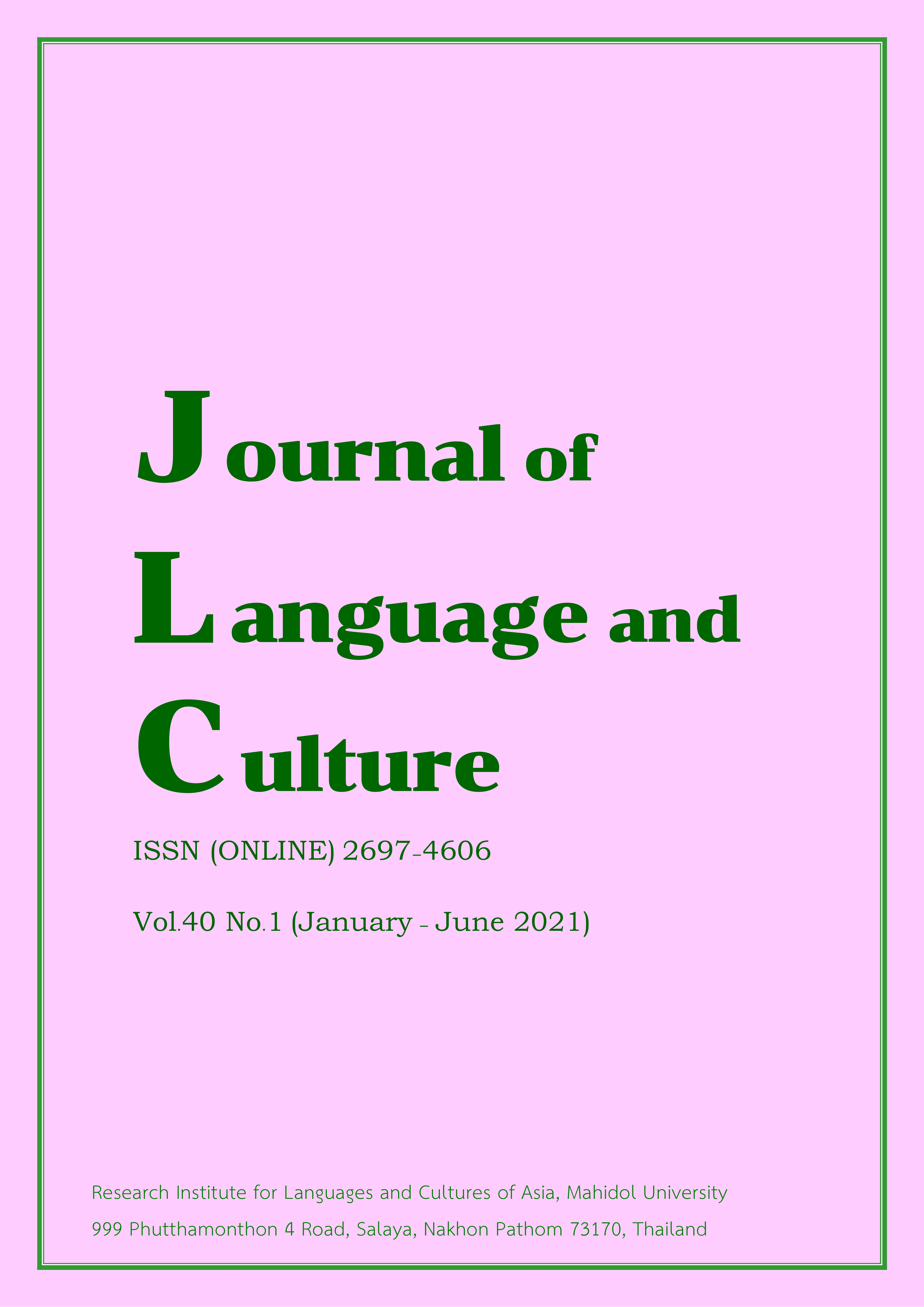The comparison of degrees of aspiration of English voiceless stops produced by native speakers and Thai university students
Main Article Content
Abstract
Aspiration has always received marginal attention when one considers English pronunciation of L2 learners. Much more exploration is made at the individual segmental level. However, we argue that this sound feature not only helps nativize their pronunciation, but there might be some difficulties for listening if their production differs from that of native speakers. The present study compared Thai university students' degrees of aspiration of English voiceless stops and those of native speakers. Methodologically, thirty Thai students and eight native speakers read twelve English words in isolation and their readings were analyzed in the Praat Program to obtain the VOT values for considering the degrees of aspiration. Then, an interview with the Thai participants was conducted to identify the factors contributing to their pronunciation. The findings revealed that the degrees of aspiration produced by both groups were significantly different (p ≤ 0.01 at least ≤), and that five most influential factors contributing to the Thai participants’ pronunciation were instructional input (72.22%), correspondence (11.66%), transliteration (9.44 %), attitude (6.11%), and self-learning (4.44%). Suggestions for instruction of English pronunciation in response to the issue is given in the conclusion.
Article Details
The articles featured in the Journal of Language and Culture (JLC) constitute academic works representing the viewpoints of the respective author(s). It is crucial to note that these opinions do not necessarily reflect those of the Editorial Board.
All articles published in JLC are released under the Creative Commons Attribution 4.0 International License (CC BY 4.0). This license grants permission for unrestricted use, distribution, and reproduction in any medium, provided proper credit is given to the original author(s) and the source.


